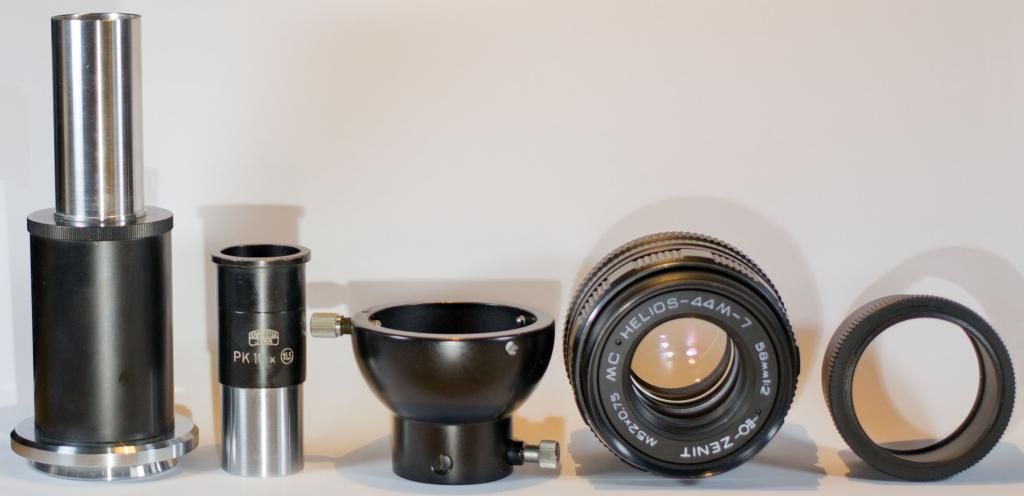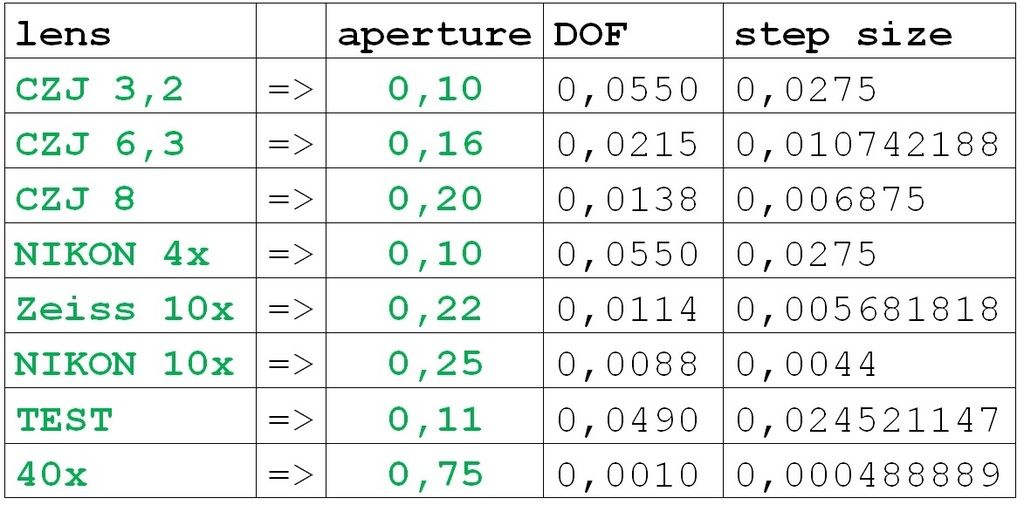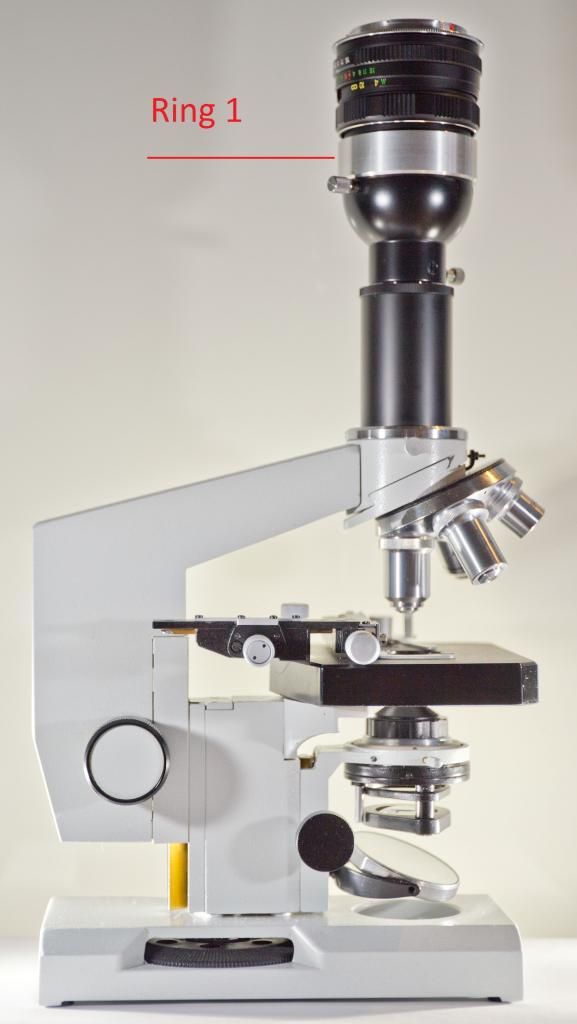How to calculate the step-size for the stacking
Moderators: rjlittlefield, ChrisR, Chris S., Pau
How to calculate the step-size for the stacking
Hello everyone,
Does anybody know any rule for the calculation of the size of the steps for the focus-stacking?
Especially for the microphotography with an ocular and a relay-lens.
BTW, for the macrophotography (without any ocular) I am using the rule based on NA
550nm/(NA*NA)) / 2
Thank you in advance.
BR, Adi
Does anybody know any rule for the calculation of the size of the steps for the focus-stacking?
Especially for the microphotography with an ocular and a relay-lens.
BTW, for the macrophotography (without any ocular) I am using the rule based on NA
550nm/(NA*NA)) / 2
Thank you in advance.
BR, Adi
I use the formula from the article "Depth-of-Focus in Microscopy" written by I.T. Young, R. Zagers, L.J. van Vliet, J. Mullikin, F. Boddeke, H. Netten
https://www.researchgate.net/publicatio ... Microscopy
To get the two sided depth I just multiply the formulas with the factor 2, hence the "lamda/(NA^2)"
If I get the math right the "simple" lamda/(2*NA^2) formula is totaly OK in air until NA goes up to 0,5.
Above that you have to do some new calculations - or stop doubling the "simple" formula.
I do not change the step size with different relay lenses.
Regads
Jörgen
https://www.researchgate.net/publicatio ... Microscopy
To get the two sided depth I just multiply the formulas with the factor 2, hence the "lamda/(NA^2)"
If I get the math right the "simple" lamda/(2*NA^2) formula is totaly OK in air until NA goes up to 0,5.
Above that you have to do some new calculations - or stop doubling the "simple" formula.
I do not change the step size with different relay lenses.
Regads
Jörgen
- rjlittlefield
- Site Admin
- Posts: 23608
- Joined: Tue Aug 01, 2006 8:34 am
- Location: Richland, Washington State, USA
- Contact:
The optical DOF, such as 1/4-lambda wavefront error, depends only on the NA of the objective.
Changes to other lenses in the system will not alter the optical DOF, unless you introduce some sort of small aperture that further stops down the whole system.
The only other way that DOF will change is if you reduce the magnification or display size far enough that what the viewer sees is limited by sensor or display resolution, instead of optical resolution.
--Rik
Changes to other lenses in the system will not alter the optical DOF, unless you introduce some sort of small aperture that further stops down the whole system.
The only other way that DOF will change is if you reduce the magnification or display size far enough that what the viewer sees is limited by sensor or display resolution, instead of optical resolution.
--Rik
For this I simply use online macro calculators:
http://coinimaging.com/calculator.html
http://extreme-macro.co.uk/calculators/
http://www.cambridgeincolour.com/tutori ... lenses.htm
http://coinimaging.com/calculator.html
http://extreme-macro.co.uk/calculators/
http://www.cambridgeincolour.com/tutori ... lenses.htm
- rjlittlefield
- Site Admin
- Posts: 23608
- Joined: Tue Aug 01, 2006 8:34 am
- Location: Richland, Washington State, USA
- Contact:
There is no simple yes/no answer.Adalbert wrote:Can the DOF be affected by the manipulation of the iris of my relay-lens (Helios 44M) ?
Stopping down the relay lens can increase DOF but it can also introduce vignetting.
Whether you can stop down far enough to increase DOF, before you also get too much vignetting, depends on details of the relay lens and how you have the objective mounted.
So, you would have to test to be sure.
In any case, remember that getting more DOF by stopping down also introduces more diffraction. Stopping down anywhere in the system is equivalent to using an objective with smaller NA.
--Rik
With the lenses shown, you'll mostly can get just vignette, the camera lens aperture will show almost focused, it's useful to close it just before vignette to help preventing external light but not to have more DOF/contrast. With the microscope this is done with the condenser aperture.rjlittlefield wrote:There is no simple yes/no answer.Adalbert wrote:Can the DOF be affected by the manipulation of the iris of my relay-lens (Helios 44M) ?
Stopping down the relay lens can increase DOF but it can also introduce vignetting.
Whether you can stop down far enough to increase DOF, before you also get too much vignetting, depends on details of the relay lens and how you have the objective mounted.
Take a look: http://www.photomacrography.net/forum/v ... hp?t=15607 (second picture)
Pau



